This is the 35th in a series of posts on the Hasselblad X2D 100C camera and the XCD lenses. You will be able to find all the posts in this series by looking at the righthand column on this page and finding the Category “X2D”.
In the previous post, when looking at 15 minute dark-field exposures made with the GFX 100S and Hasselblad X2D, it appeared that the noise spatial frequency distribution of the Fuji camera was biased towards lower frequency noise, making the noise more obtrusive, even though it was lower in amplitude with the GFX 100S.
In this post, I’ll look at that issue quantitatively.
We’ll be looking at raw plane spectra, so we’ll need to sort out which raw plane is which. The Fuji uses a GRBG Bayer pattern, and the Hasselblad uses a RGGB one, so:
- Plane 1 on the X2D is red, and plane 1 on the GFX is green
- Plane 2 on the X2D is green, and plane 2 on the GFX is red
- Plane 3 on the X2D is green, and plane 3 on the GFX is blue
- Plane 4 on the X2D is blue, and plane 4 on the GFX is green
The red planes:
I’ve had to use a different scale for the GFX vertical axis. You’ll see why in a minute.
The horizontal scale is frequency, normalized to the sampling frequency of the sensor. Everything but the vertical orientation in the X2D has about the same high frequency rolloff of roughly 2 stops from DC to half the sampling frequency.
The blue planes:
The GFX has substantially more rolloff. That is especially obvious near zero frequency, where there is a spike big enough that I couldn’t fit the curve on a graph with a plus and minus three stop range.
The first green channel for each camera:
The X2D is flat. The GFX is almost flat, but has a big spike near zero frequency.
The second green channel for each camera:
Both are pretty flat.

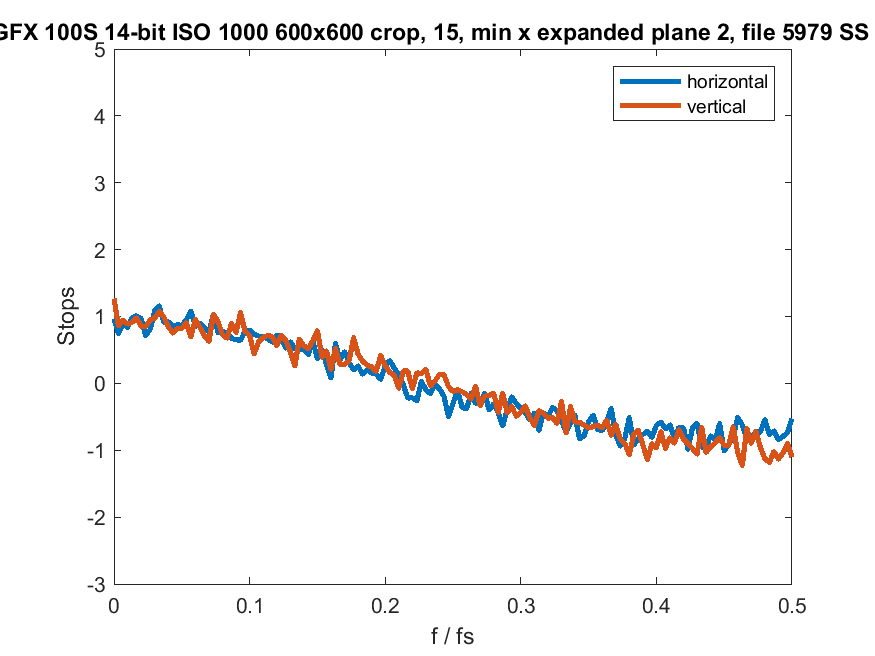
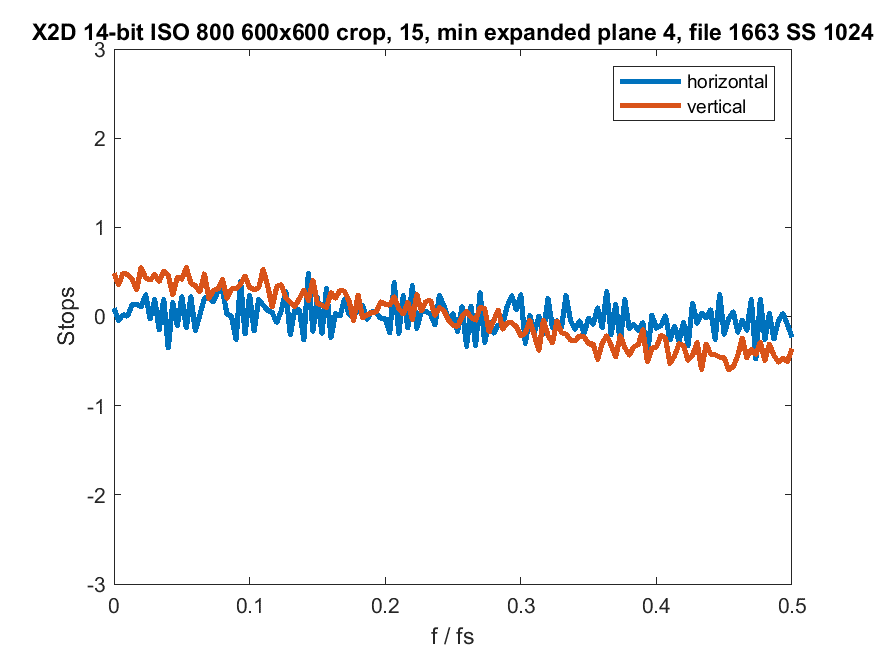
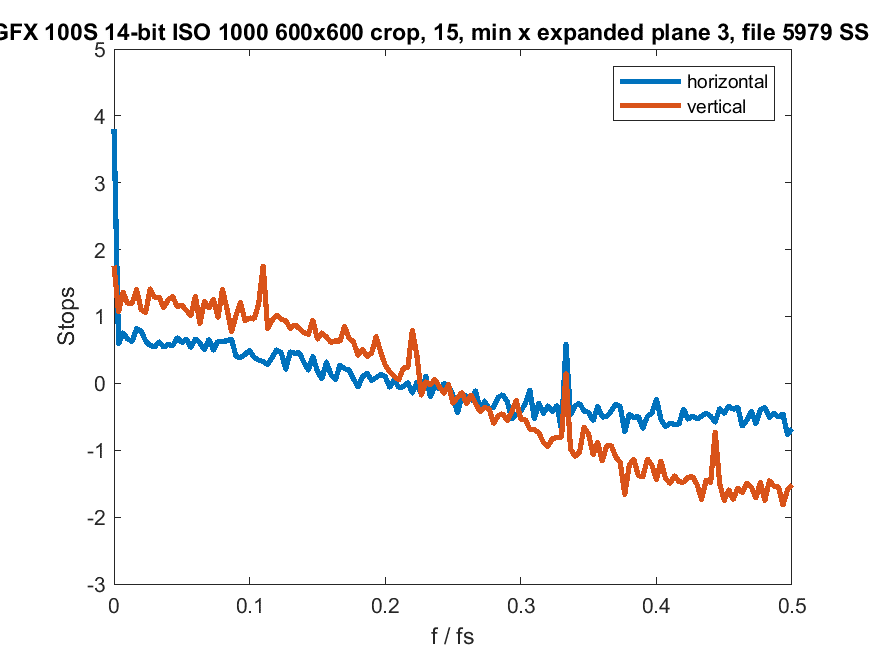
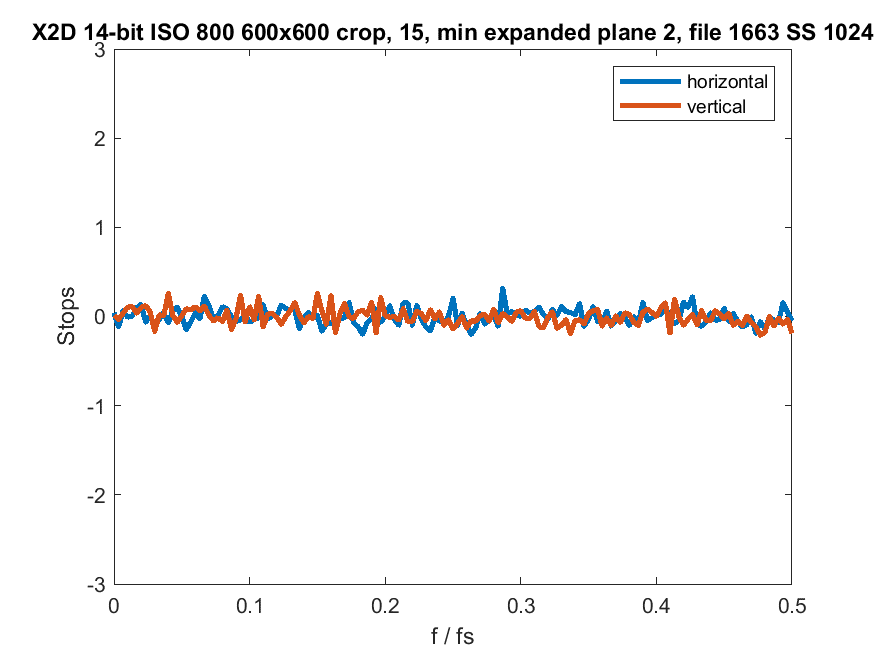
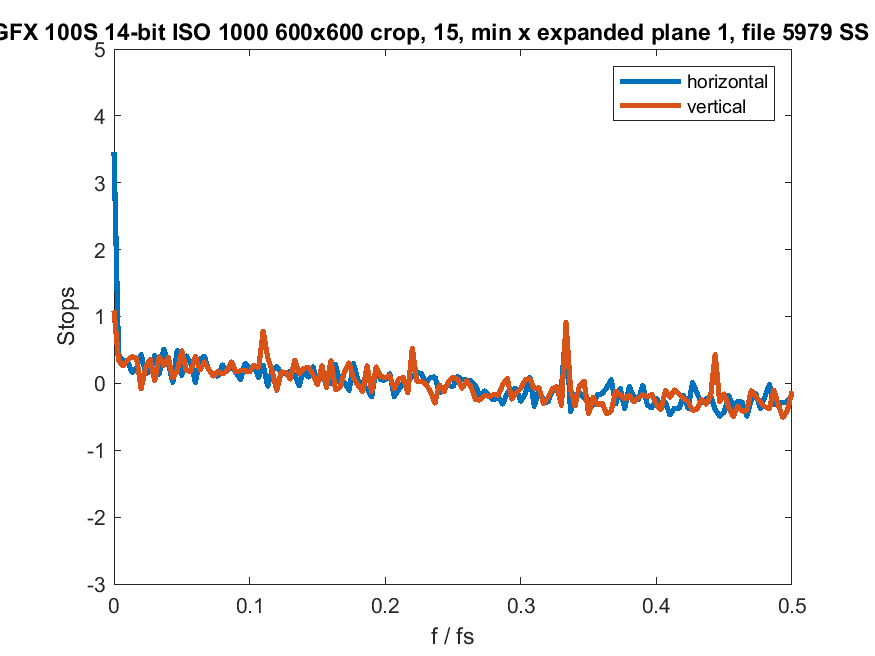
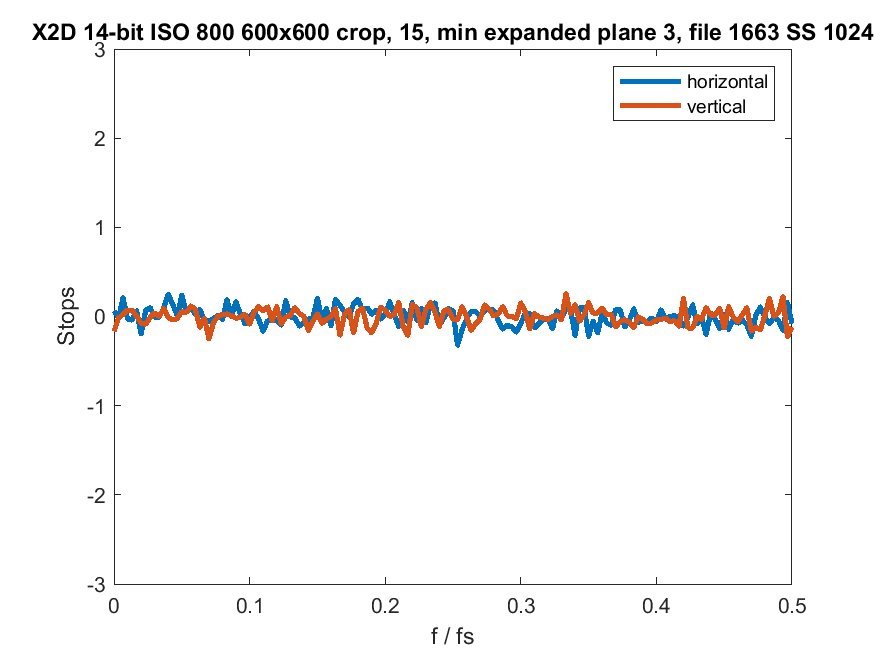
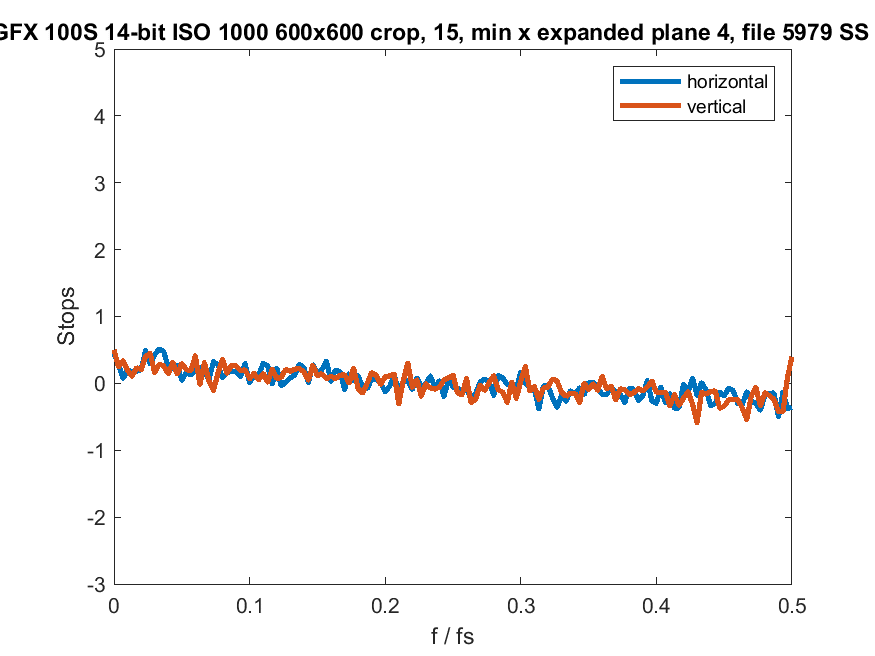
Leave a Reply